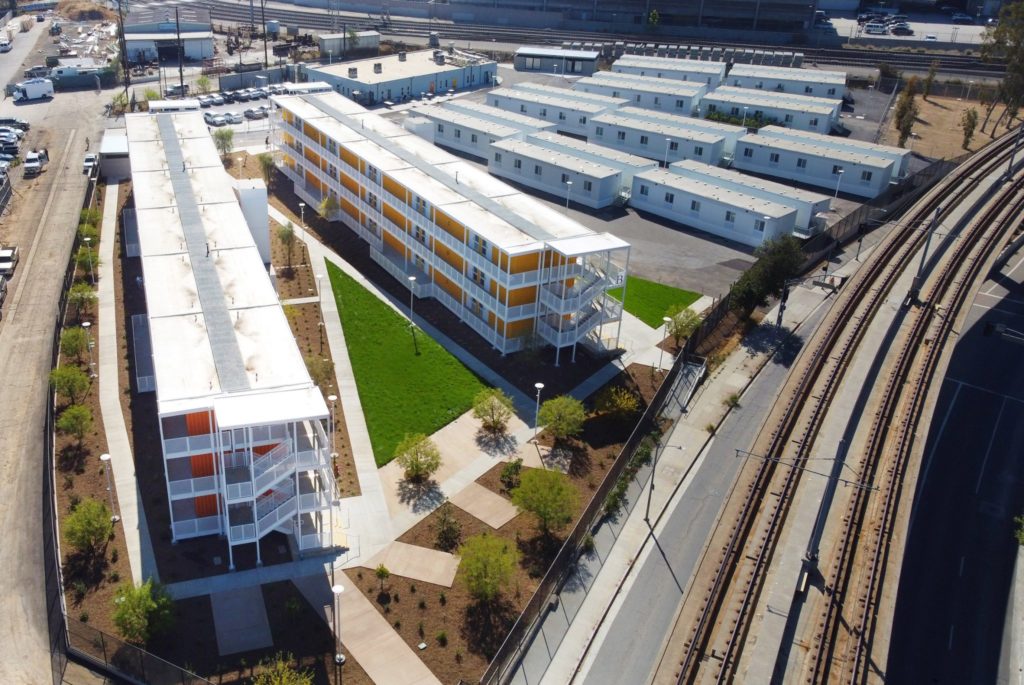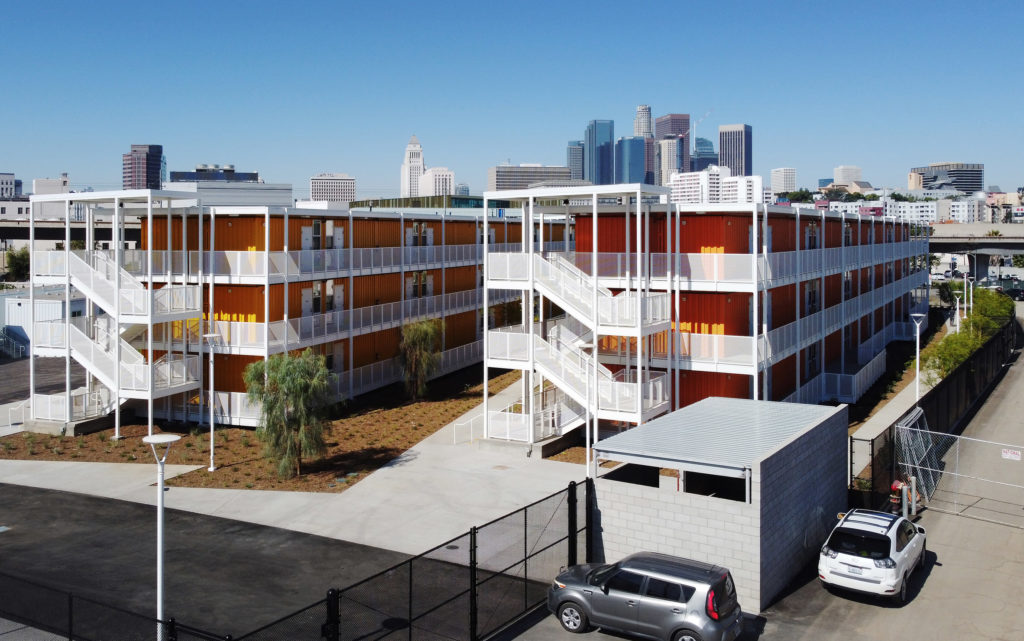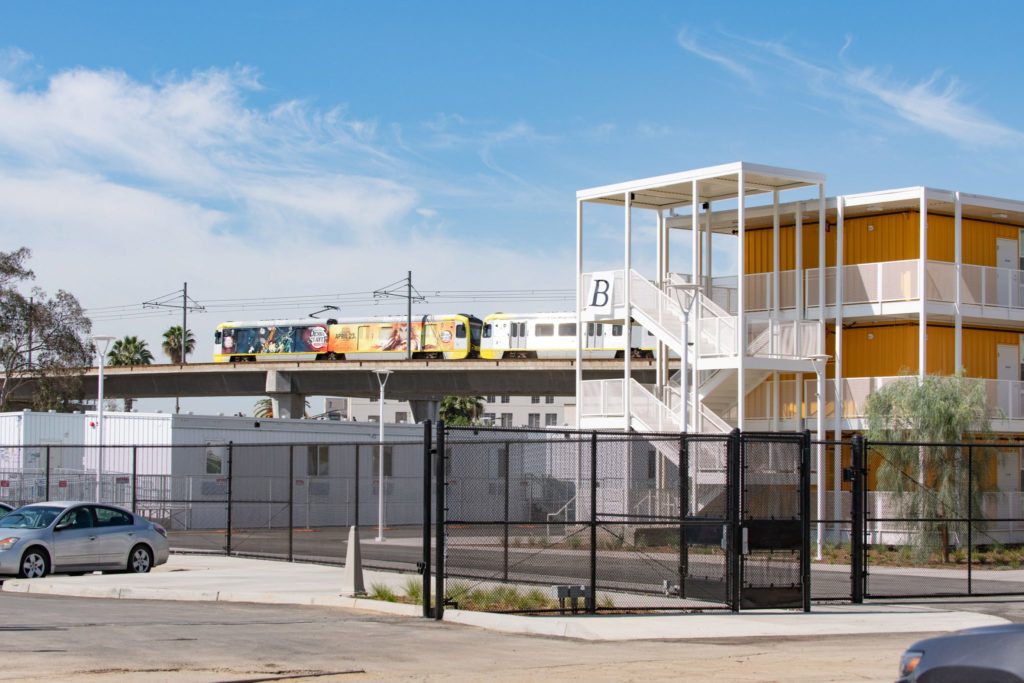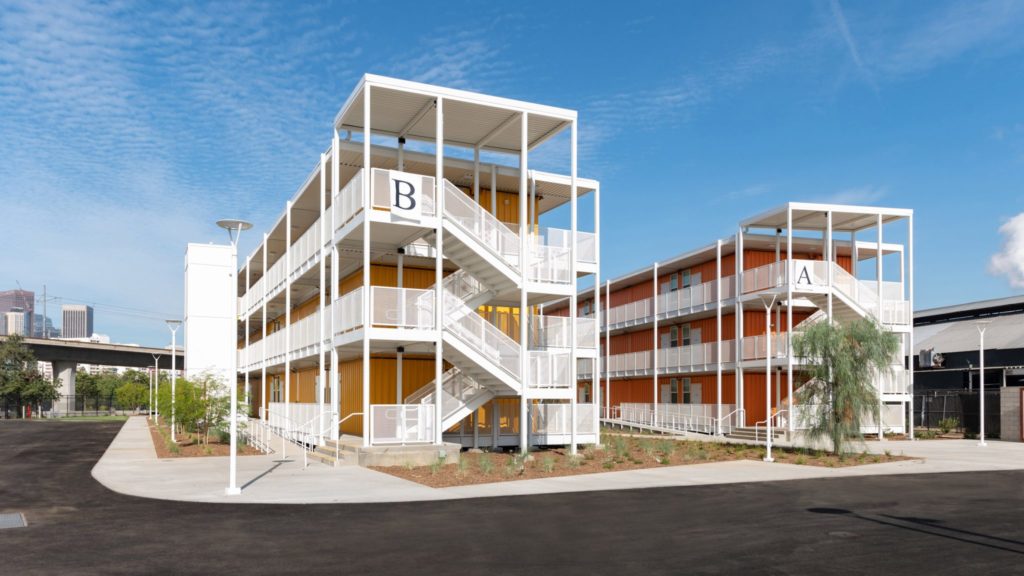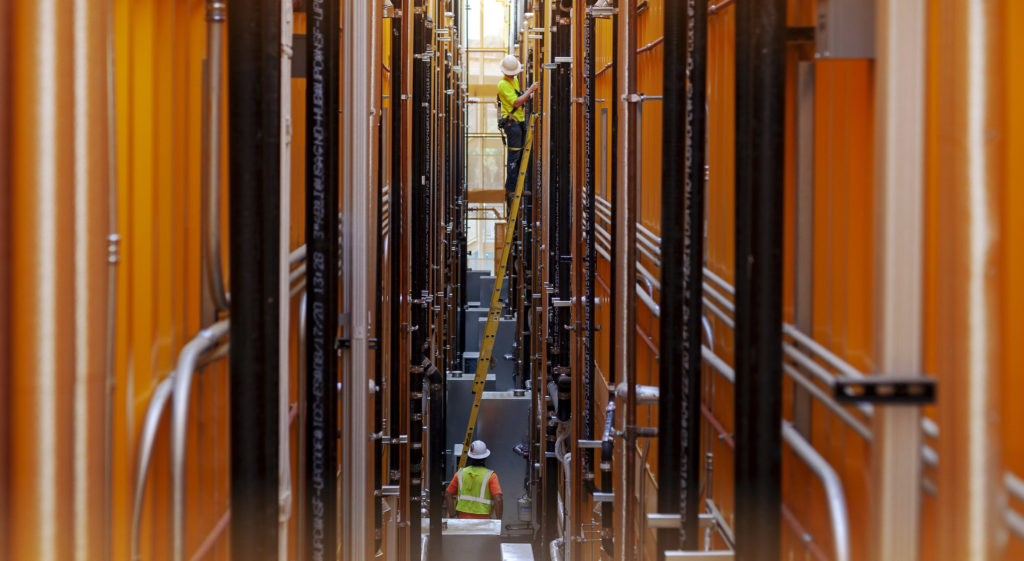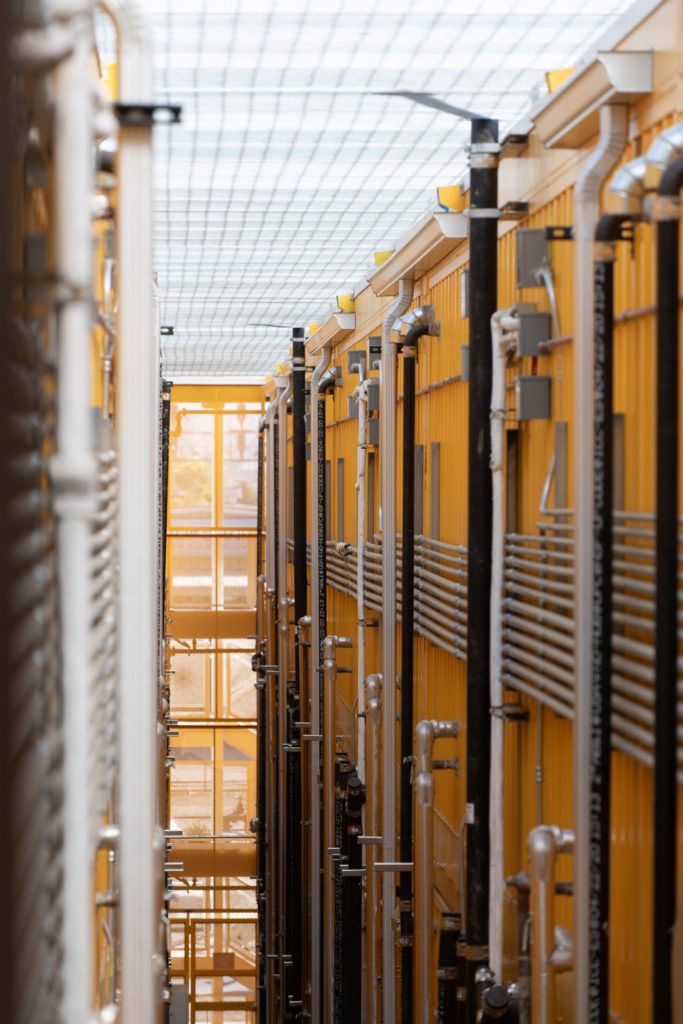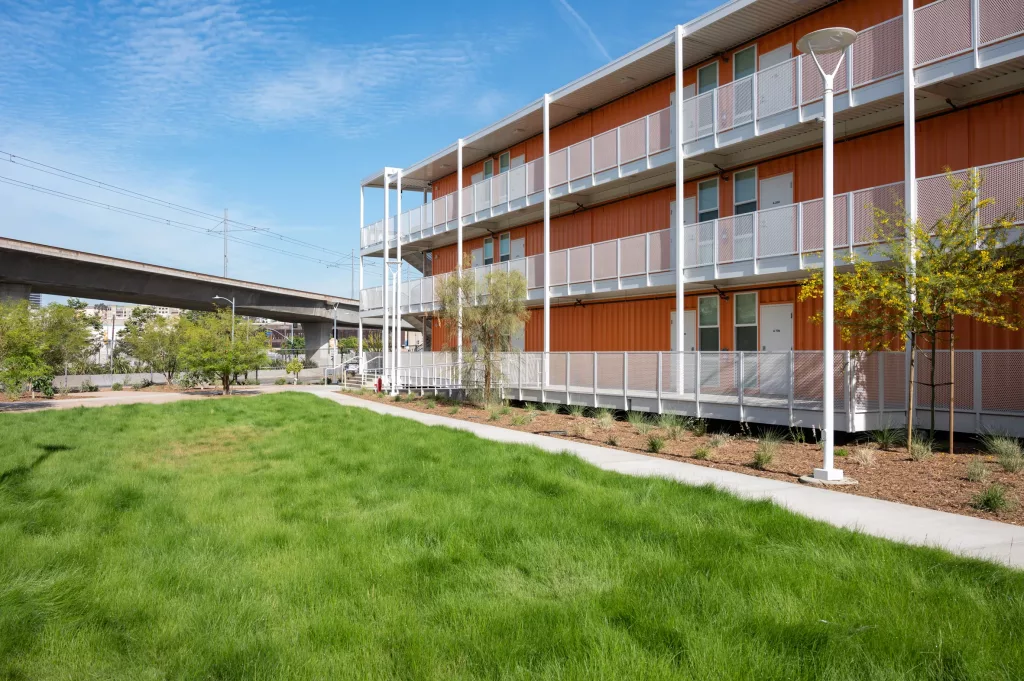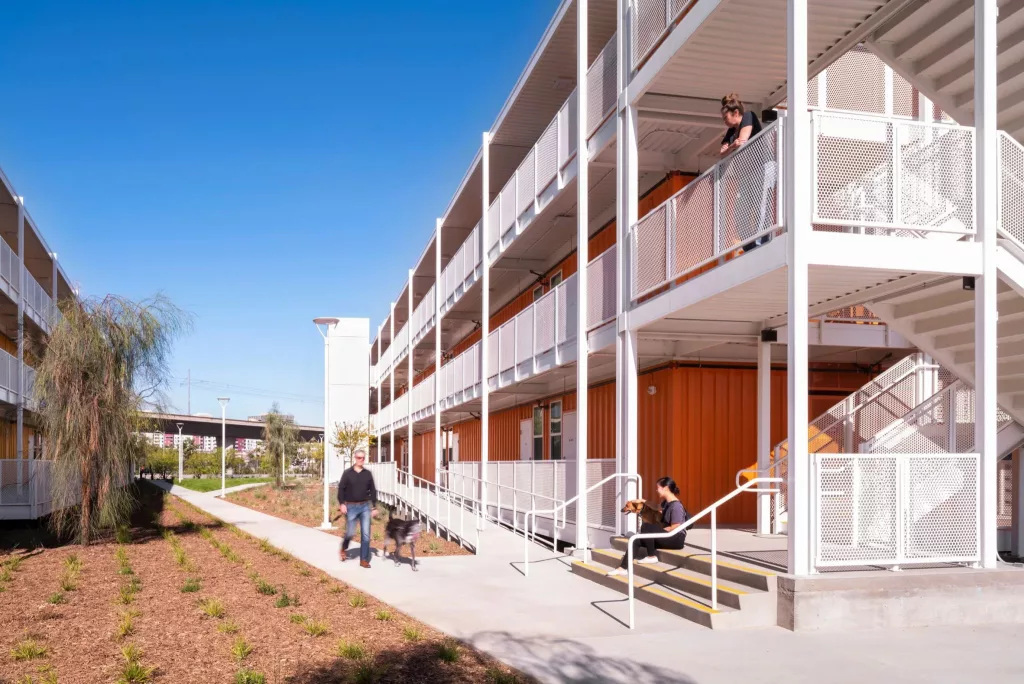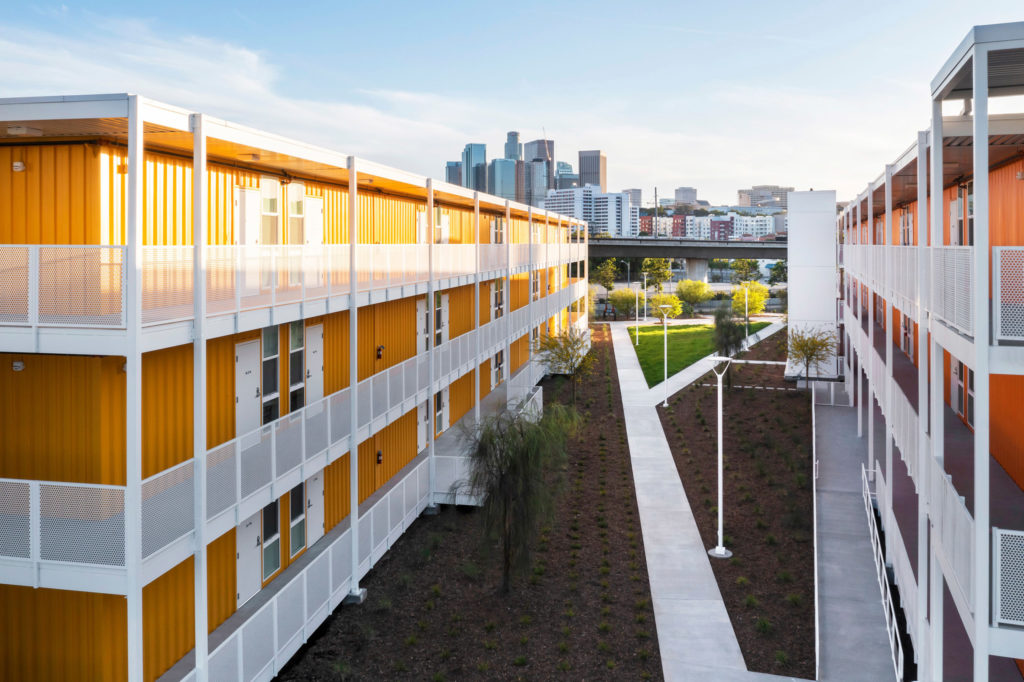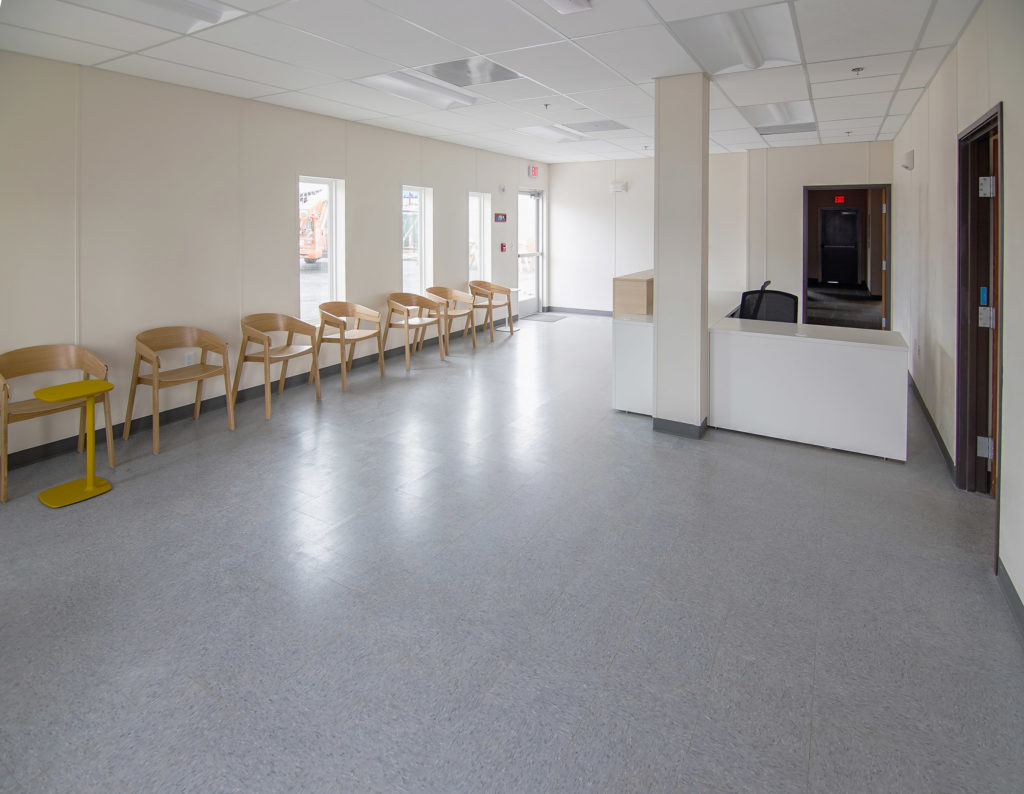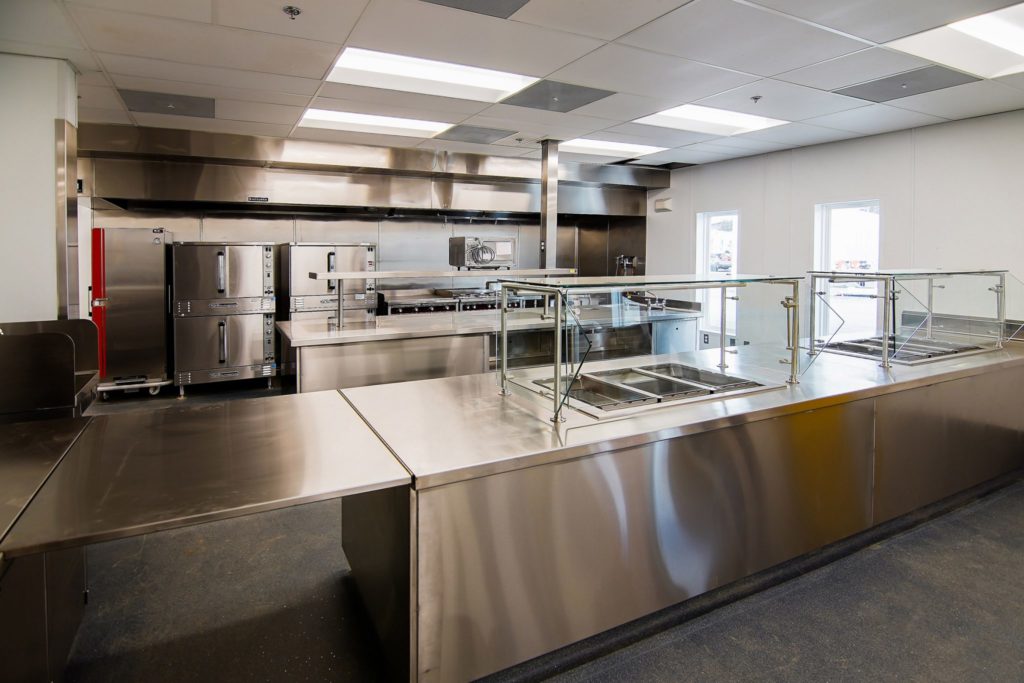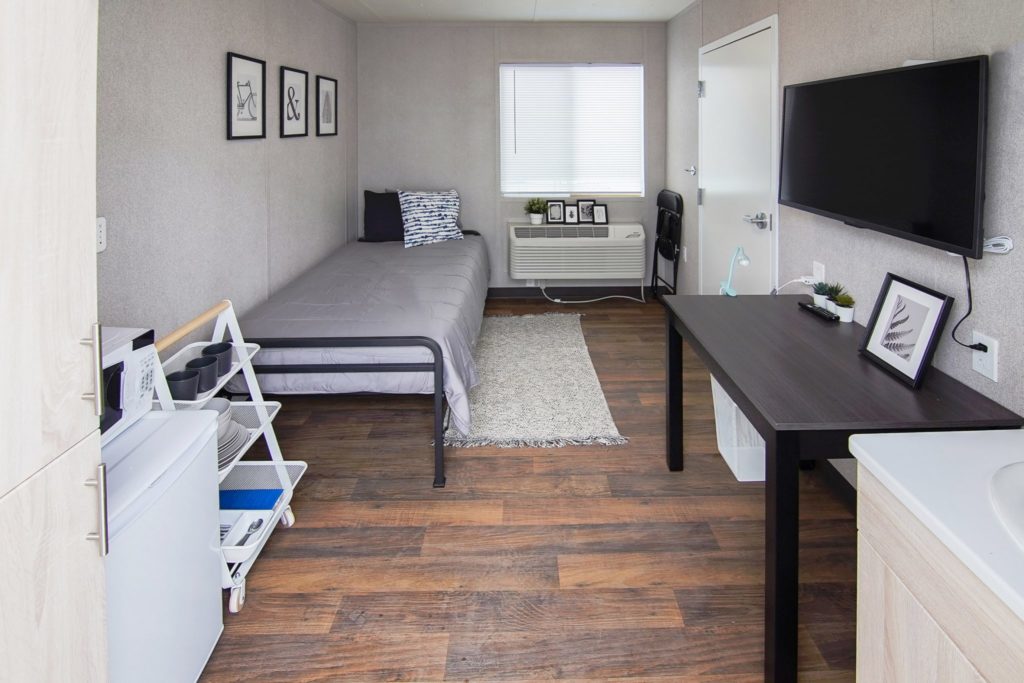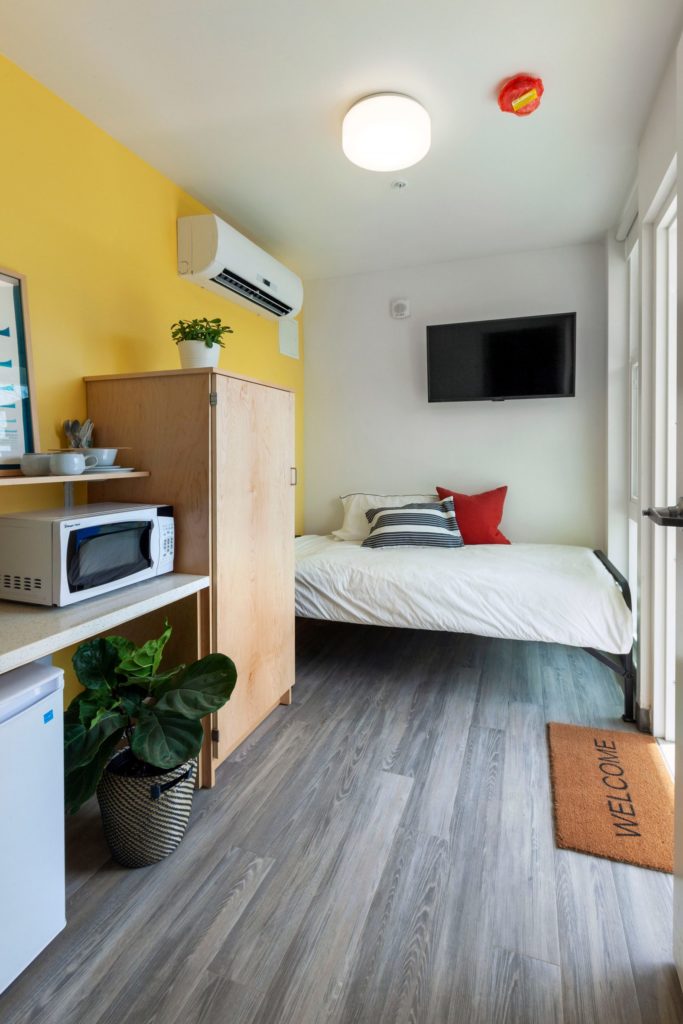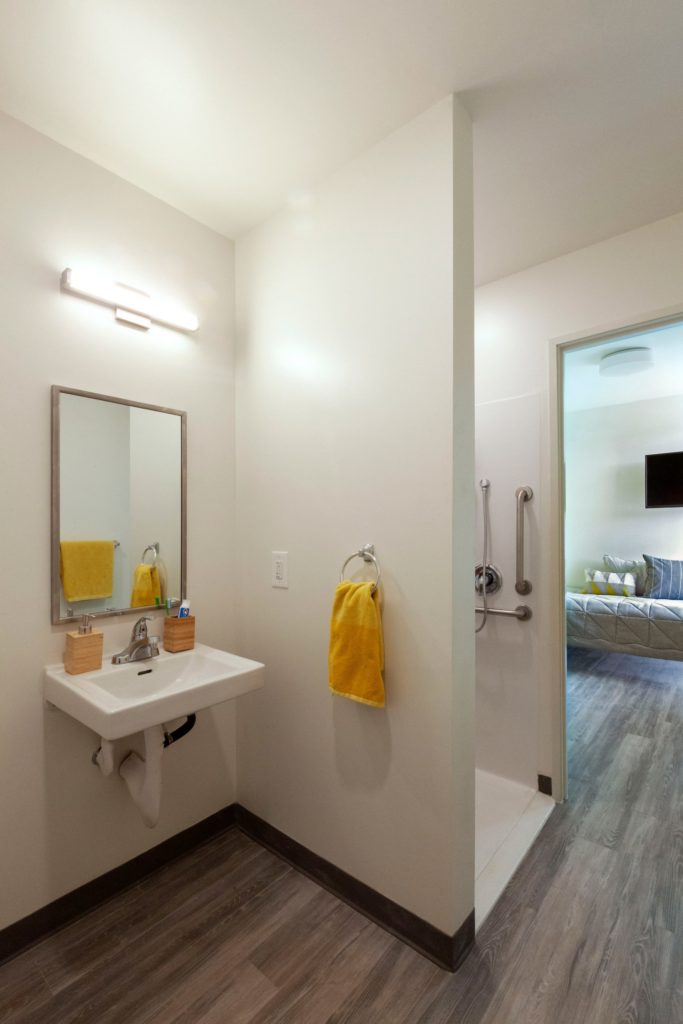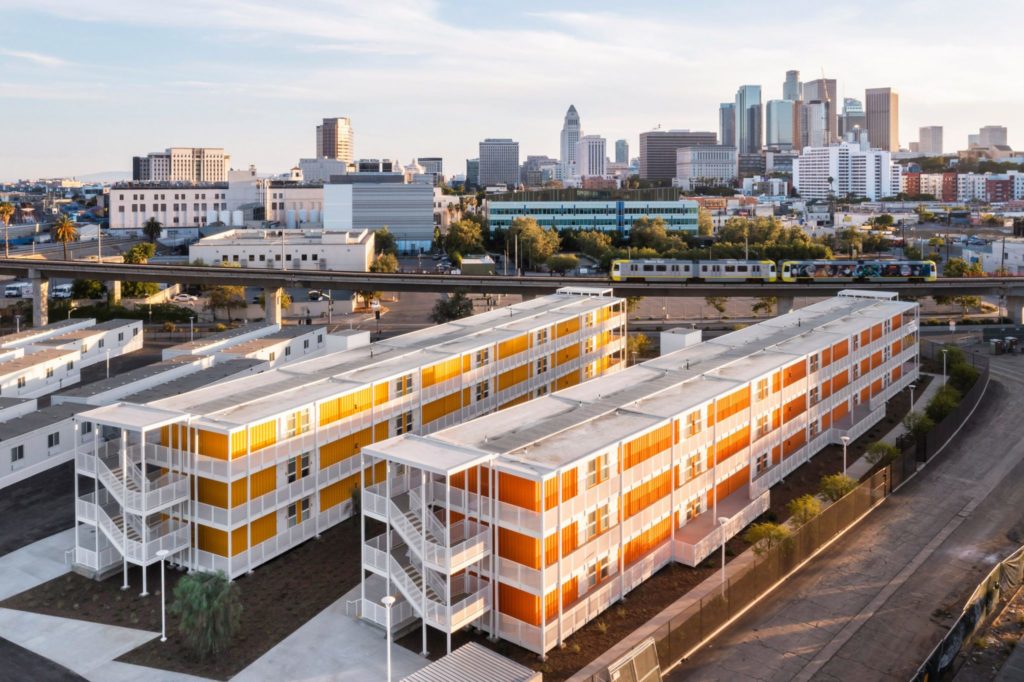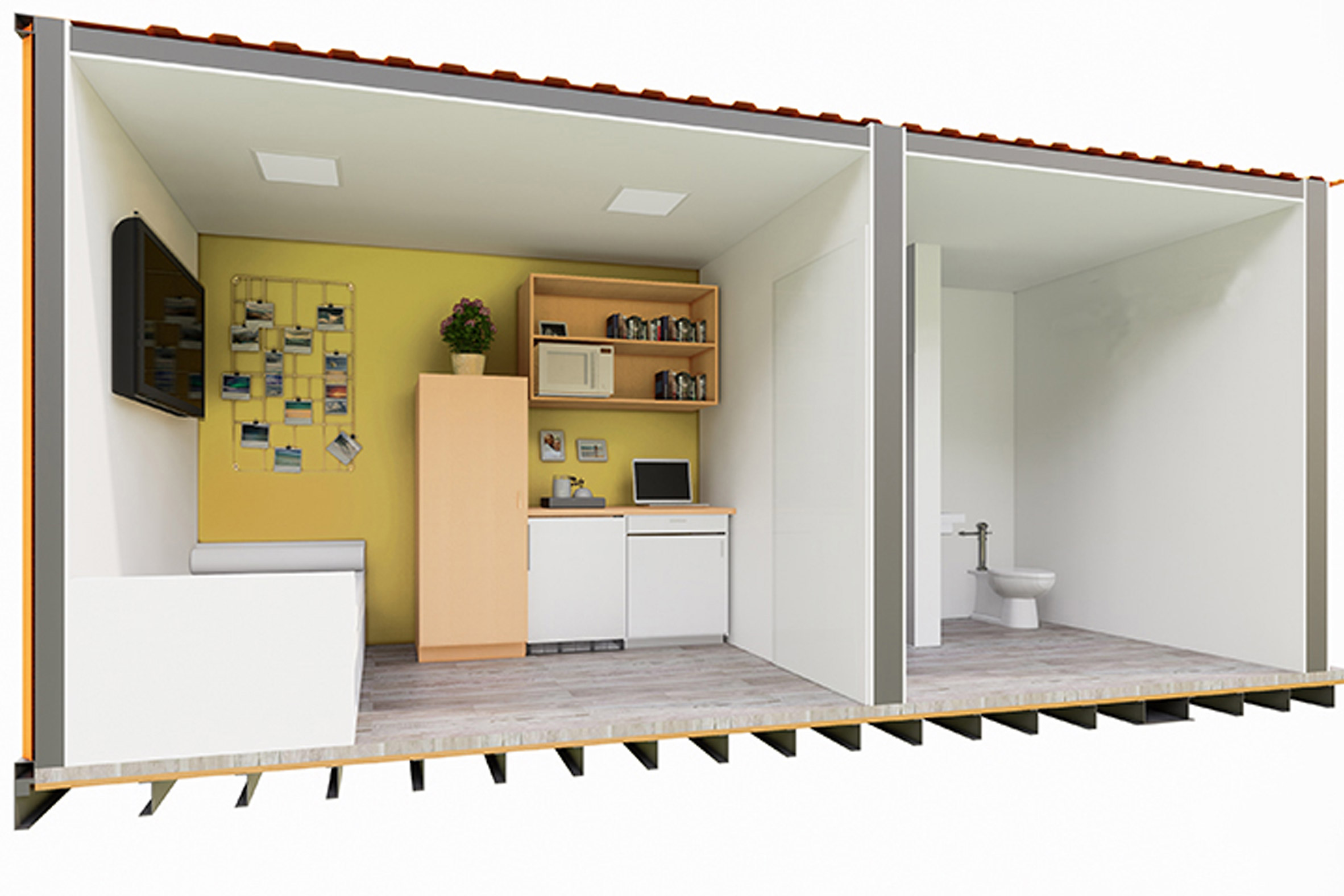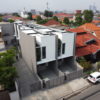The Hilda L Solis Care First Village is located on a 4.2-acre (1.7-hectare) site in Downtown Los Angeles which formerly held a parking lot. The facility was created by NAC Architecture, in collaboration with California-based Bernards, a builder and construction management company.
For the irregularly shaped site, the team conceived a series of single-level structures and a pair of multilevel buildings. Three different modular components were used: repurposed shipping containers, wood-framed prefabricated units, and mobile units. Prefabricated modules and mobile units were also used to construct the housing project. The modular elements, which could be built off-site, helped speed up the project. The shipping containers were refurbished by Crate, a California-based company.
“Design, permitting, and construction of the project was aggressively accelerated to meet the heightened need for people living on Los Angeles’ streets in the midst of a pandemic…….The shipping containers are stacked, fixed in place, and use an attached structure of open corridors and stairs to facilitate access to each unit,”
NAC Architecture.
Encompassing 5,946 sqm, the facility was completed in six months. It offers 232 housing units, along with a common building that holds a commercial kitchen, dining area, laundry facilities and administrative spaces. The site also has landscaped courtyards, a dog park, and parking spots for staff and residents.
To make the cargo containers suitable for habitation, the team cut large windows into them and fully insulated the walls and ceiling. Each container holds two living units measuring 12.5 sqm. The apartments are equipped with a bed, microwave, mini-fridge and flat-screen TV and a private bathroom.
To help mitigate the spread of the coronavirus, and to help increase the residents’ autonomy, all units at the complex have their own heating and ventilation systems. The facility opened in April 2021 and reached full occupancy the following month, in a bid to reduce the estimated 60,000 people in the Los Angeles area who are experiencing homelessness.
